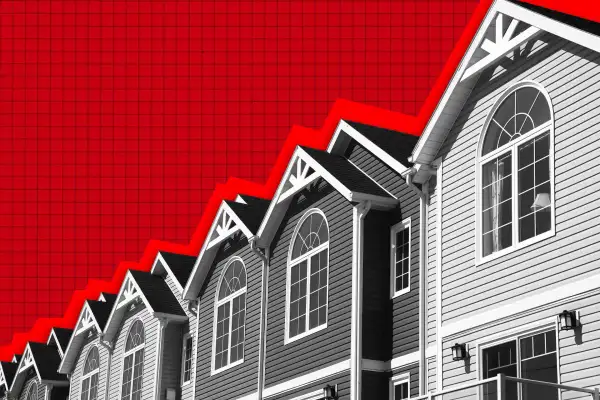10 Cities Where Home Prices Are Rising the Most

Even as some parts of the red-hot housing market have begun to cool, home prices just keep rising to new record highs.
The median sales price of an existing single-family home climbed to $413,500 in the second quarter, according to data released Thursday by the National Association of Realtors (NAR). That’s 14.2% higher than the second quarter of 2021, and the first time the median price cited by NAR has exceeded $400,00.
NAR found that homes posted double-digit price gains in 80% of the metropolitan areas it tracks. In the first quarter of the year, that number was 70%.
Prices kept climbing despite rising mortgage rates, which soared above 5% in April, exacerbating an existing affordability crunch and pushing many buyers out of the market. "Home prices have increased at a pace that far exceeds wage gains, especially for low- and middle-income workers," NAR Chief Economist Lawrence Yun said in a statement.
The mortgage payment on a typical existing home with a 20% down payment jumped to $1,841 in the second quarter — 32% more than in the first quarter and 50% higher than a year ago, according to NAR.
10 cities where home prices are rising the fastest
Here are the top 10 metro areas where prices rose the most on an annual basis in the second quarter, according to NAR. Seven are located in Florida.
- Fayetteville-Springdale-Rogers, Arkansas/Missouri: 31.9%
- Lakeland-Winter Haven, Florida: 31.4%
- Naples-Immokalee-Marco Island, Florida: 28.9%
- North Port-Sarasota-Bradenton, Florida: 28.8%
- Myrtle Beach-Conway-North Myrtle Beach, South Carolina/North Carolina: 28.5%
- Tampa-St. Petersburg-Clearwater, Florida: 28.0%
- Cape Coral-Fort Myers, Florida: 27.8%
- Punta Gorda, Florida: 27.4%
- Ocala, Florida: 26.7%
- Ogden-Clearfield, Utah: 25.5%
At the local level, Yun says that home price growth is driven by strong job markets and supply constraints.
Where the housing market is going next
The same forces that are making it more difficult to buy a home — rising prices, rising borrowing costs, inflation and an ongoing bear market — are also pushing sellers away from the market. Many sellers also need to buy homes themselves, and they see it's a difficult and expensive time to buy. Others may be looking at the cooling market and deciding to wait to list their homes.
Recent data from real estate brokerage Redfin shows that new listings over the four weeks ending on August 7 were down 12% compared to the same period last year. That's the steepest drop since June 2020, though the total number of homes for sale is actually 4% higher than it was last year because sellers are stepping back at a slower pace than buyers.
Redfin Deputy Chief Economist Taylor Marr says that could be a sign that the market is becoming more balanced. “If mortgage rates resume their downward trajectory,” he said in a statement, “more buyers and sellers could get back in the game.”
More from Money:
Why a Recession Could Help Homebuyers — Plus 5 Tips for Buying During a Downturn
10 Cities Where Rich Out-of-Towners Have Driven up Home Prices
This One Stat Shows Just How Hard It Is to Buy a House in 2022
